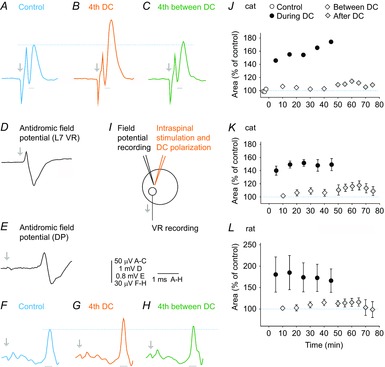Figure 8. Strong facilitation of direct activation of motoneurons by stimuli applied in a motor nucleus during but not after cathodal DC polarization.

A, record of averaged discharges (n = 20) evoked in the L7 VR by stimuli (18 μA) applied in the MG motor nucleus in a cat. B, as in A but during the fourth application of 0.2 μA direct cathodal current. C, as in A but 5 min after DC application. D, antidromic field potential at a location at which the intraspinal stimuli were applied. F, G and H, as in A–C but with records from the DP nerve from an experiment in a rat (with the dorsal roots L2–L6 transected); the discharges were evoked by stimuli (20 μA) applied in the DP motor nucleus at the site of the antidromic field potential illustrated in E. In A–D and E–H, arrows indicate stimulus artefacts and dotted lines indicate peaks of control responses. I, stimulation and recording sites. J, changes in the area of the early VR discharges illustrated in A–C during successive periods of DC application, the in-between periods and the post-polarization periods, as indicated. The areas were measured during a time window of 0.26 ms from the onset of the discharges (indicated below traces in A–C). They corresponded to the earliest part of the antidromic field potential in D. K, as in J but for values (mean ± sem) for discharges evoked from 9 stimulation sites in 5 cats. Repeated measures ANOVA indicated a time effect (P = 0.0000; F14112 = 15.869); Tukey's post hoc HSD test revealed that all the values ‘during’ are significantly different from all the values ‘after’ (P always < 0.05). A one-sample t test revealed that the mean of the values ‘during’ is different from the control (P < 0.05), whereas the mean of the values ‘after’ does not differ from the control. The polarization acted thus only when applied, facilitating the activation of motoneurons, at the same time as leaving the responses evoked after its application practically unaltered. L, as for K but for discharges evoked in the DP nerve from 7 stimulation sites in 6 rats. Repeated measures ANOVA indicated in this case a significant effect (P = 0.0028; F14,84 = 2.66), whereas no significant differences were revealed by Tukey's post hoc HSD test.
